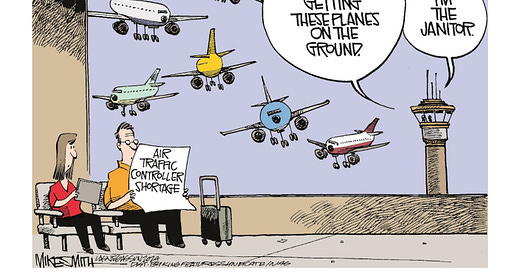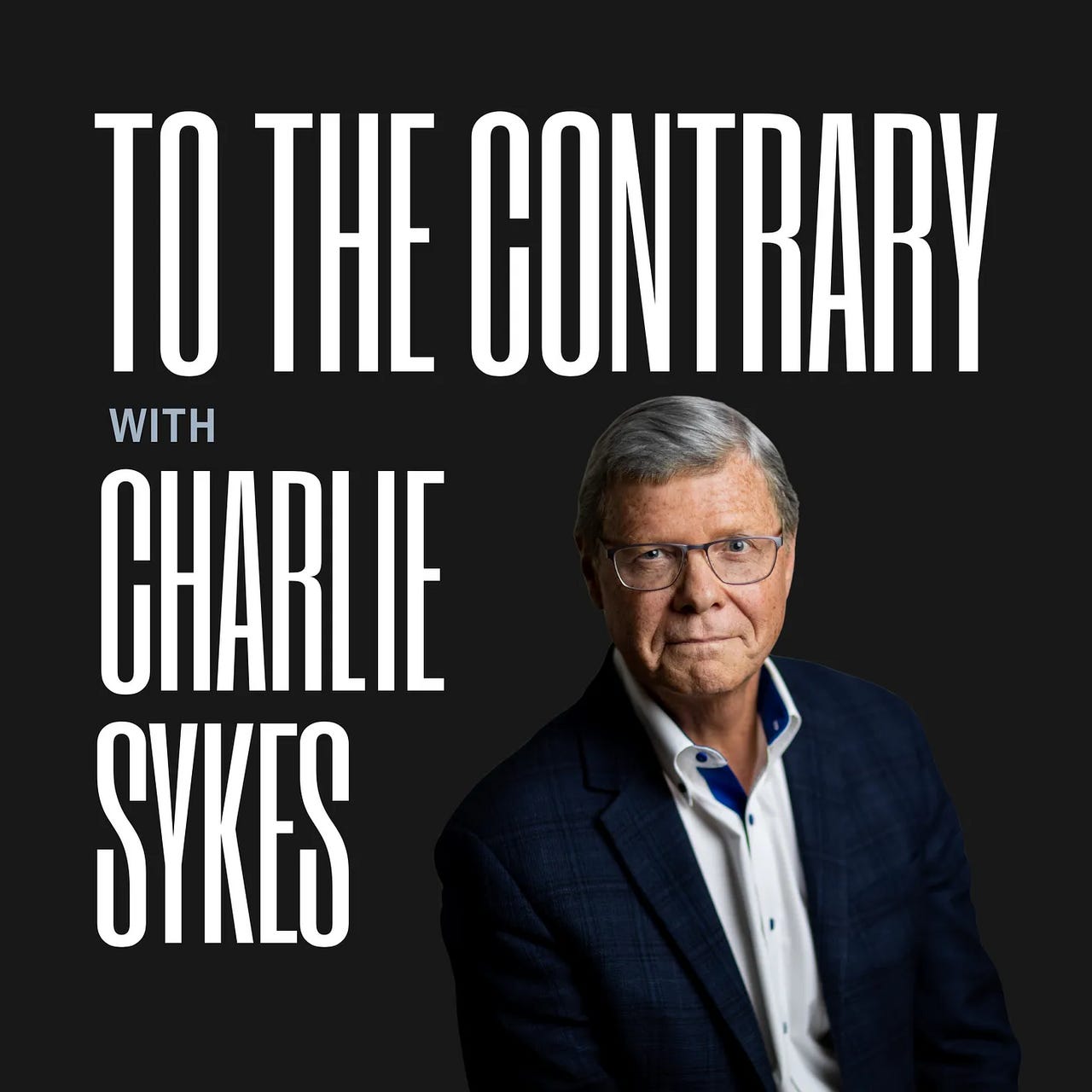“Ignorance is the curse of God; knowledge is the wing wherewith we fly to heaven.”
~William Shakespeare
For over twenty years I was a so-called “road warrior.” One of those years, I had flown so often that I had premier status in three different airline mileage clubs. I was an expert at being an airline passenger. I knew which seat to reserve, the best time to fly, which type of aircraft I preferred or avoided, how to fit my complete travel wardrobe in one overhead piece of luggage, and where all the airport lounges were. One can learn a lot when they fly often.
While I had countless delays, missed a couple of flights and had a few flights canceled, in all the years I have flown, I have experienced only two emergency situations.
The first one was when I was in high school when I was flying out of Albany, NY. Our plane was taking off and nearly collided with one that was landing. It was bit unnerving, when our pilot braked very quickly and intensely - but no one was injured.
The second time was early in my career. I was flying back to O’Hare from Philadelphia and the plane never circled the lake or any of the other typical maneuverers; it dropped and landed immediately. We were in some far-off airstrip with dozens of emergency vehicles around us. The pilot announced, after we landed, that there had been a bomb threat against our plane and we needed to deboard quickly. Again it was pretty unnerving, but turned out to be a false alarm.
In the past, I was always far more concerned for my safety riding in a taxi in various cities, than I ever was in the air.
I ended my business travel shortly before 9/11, so now I only do leisure travel and not nearly as often. So many things changed after that day and even today, I’m sometimes confused at some airports with all the kiosks and weird check-in procedures. I still know the planes and seats I like, but the rest of it, I’m still learning.
I miss flying out of O’Hare a lot. Asheville only has a few direct flights to various US cities (fortunately Chicago is one of them) and none international. Everything is now a connecting flight, if I want to travel to some obscure place. It’s pretty annoying — and the parking at the Asheville airport is abysmal.
Regardless of my current inconveniences with the Asheville airport, I always believed that traveling by air was the safest way to travel. But today, I find that I’m not quite as comfortable with flying. I’m feeling a little uneasy with this administration and air safety. They have cut so many workers and I can’t help but wonder what is going on with all our vital government agencies around airline travel. Are there enough TSA agents checking suitcases and passengers? How well staffed is the FAA with air traffic controllers? I’ve read some pretty horrific incidents at airports with customs agents detaining visitors. It’s all a bit unsettling.
The Washington Post reported that in February, administration officials stopped the work of an outside panel of experts examining the country’s air traffic control system.
In February, The Atlantic reported about some of the FAA’s current situation:
The FAA’s Troubles Are More Serious Than You Know
On January 29, American Airlines Flight 5342 collided with a U.S. Army helicopter near Washington’s Ronald Reagan National Airport, killing 67 people, in the deadliest U.S. air disaster in recent history. That alone would have been a crisis for the Federal Aviation Administration…But the next day, President Donald Trump deepened the FAA’s problems by blaming the disaster on diversity programs, a pronouncement that baffled many in the agency’s workforce. At least one senior executive decided to quit in disgust.
As hundreds of career officials depart, the FAA has a fresh face in its midst: Ted Malaska, a SpaceX engineer who arrived at the agency with instructions from SpaceX’s owner, Elon Musk, to deploy equipment from the SpaceX subsidiary Starlink across the FAA’s communications network. The directive promises to make the nation’s air-traffic-control system dependent on the billionaire Trump ally, using equipment that experts say has not gone through strict U.S.-government security and risk-management review.
You might want to read the whole article. I found it both illuminating and alarming.
On April 28, air traffic controllers lost both radio and radar contact with the pilots who were flying planes into Newark, New Jersey, Liberty International Airport, for about 90 seconds. In the aftermath of the incident, aircraft traffic in and out of Newark was halted, and four experienced controllers and one trainee took medical leave for trauma.
The failure of the system the controllers rely on left several of those on duty that day with extreme anxiety, requiring a mental health respite that has caused low staffing levels for days since. It has also prompted more than 1,000 flights at one of the nation’s busiest airports to be canceled or delayed, leaving some passengers feeling frustrated and abandoned. (source: How Lost Radar and Silent Radios Have Upended Newark Air Travel, New York Times)
As is per usual, from Trump and his incompetent cabinet, DOT Secretary and former FauxNews host, Sean Duffy blamed the Biden administration for the system. His predecessor, Pete Buttigieg, rebutted the claims and said he had launched the modernization of the systems and reversed decades of declining numbers of air traffic controllers.
As someone who knows a little bit about government procurement of systems, I’m not surprised that the relevant systems needed to be modernized. Updating systems is expensive, requires government funding and can take years to implement based on who is serving in Congress and the White House. I wrote about this way back when in a post called Bugged. If Duffy wants to blame the Biden administration, it begs the question why the system wasn’t updated and replaced, when Elaine Chao was the United States Secretary of Transportation under the first Trump administration.
On Monday the White House fired Alvin Brown, the Black vice chair of the National Transportation Safety Board (NTSB), the agency that investigates civilian aviation accidents. This is a non-partisan body of government — for the White House to even get involved is unheard of.
Based on what I’m reading, it seems that Elon Musk and DOGE have a lot of explaining to do with what they are doing to upend our transportation infrastructure. If you didn’t get the chance, you might want to read Heather Cox Richardson’s Letters from an American - May 7, 2025.
To quote Michael Lewis again as I did in my post, The so-called “Deep State”
“What has happened and what is accelerating is if you disable the government, like make it even harder for the good people who are in it to do their jobs so they do them less well, through no fault of their own, you just have not given them the tools to do their job, you reinforce the idea that government cannot do anything. You create this vicious cycle of cynicism and make it -- you make the country is essentially ungovernable and that is where it is headed, chaos…. If you want to destroy the society - you destroy the government.”
* * *
It’s a good thing I love road trips… that may be how I travel for a while.
Thought for the day in honor of her birthday…
“The greatest heroes are those who do their duty in the daily grind of domestic affairs whilst the world whirls as a maddening dreidel.”
~ Florence Nightingale
Must Read Article:
Trump Is to Accept a Luxury 747 From Qatar for Use as Air Force One
The Trump administration plans to accept a luxury Boeing 747-8 plane as a donation from the Qatari royal family that will be upgraded to serve as Air Force One, in possibly the biggest foreign gift ever received by the U.S. government, a senior official with direct knowledge of the matter said. The plane will then be donated to President Trump’s presidential library when he leaves office, the official said, allowing him to continue using it as a private citizen. The plan raises substantial ethical issues, given the immense value of the lavishly-appointed plane and the fact that Mr. Trump plans to use it after he leaves office. Sold new, a commercial Boeing 747-8 costs in the range of $400 million.
Flying feels riskier. Here’s what the experts say about that high number of accidents.
After two high-profile commercial plane crashes at U.S. airlines this year, travelers have been left wondering if flying is still safe. Statistically speaking, it is, but those statistics themselves can be a little confusing. A cursory glance at numbers from the National Transportation Safety Board will show 67 deaths in commercial plane crashes this year – a huge upward surge after zero deaths last year and very out of line with the 10-year trend in which commercial aviation deaths have generally been measured in the single digits. However, it’s important to remember that flying remains safe, and there’s context to the number of accidents recorded by aviation professionals.
Quote of the day:
“For pilots who navigate these skies daily, our message is unequivocal: Now is the time for immediate, decisive action with steadfast commitment to safeguard and enhance aviation’s safety and efficiency.”
~ Jason Ambrosi, president of the Air Line Pilots Association
What I’m reading today…
Trump will pitch a costly fix to the nation’s aviation woes. It already faces headwinds.
The emerging plan will be one of the most challenging tests yet of the new Trump administration’s ability to address years of flaws in an aging, but crucial government function meant to safeguard Americans’ travel — even as it pursues spending and staffing cuts, including in the FAA. For the air traffic system, any fix will involve dealing with many miles of communications cables, radar and communication equipment scattered around the country, and tens of thousands of safety personnel working some of the nation’s highest-stress jobs.
Pay Attention to What Happened in Newark.
Through the decades in which I’ve followed aviation, I’ve kept hearing that the air-traffic control system needed to be “updated” and “modernized.” The 1980s version of that discussion followed Ronald Reagan’s sweeping dismissal of air traffic controllers who had gone on strike.
Ever since then there’s been a three-way tension setting aviation policy, including how and where to invest in FAA systems. Force one: The ever expanding possibilities of technology. Force two: The aviation world’s “written in blood” caution about changing anything too quickly. Force three: The budget-cutting passion of most political administrations, thinking they can squeeze fat out of the FAA, NASA, and related groups.
This standoff long predates Donald Trump and the Doge insanity. But the initial Doge cuts, not just at the FAA but also at NASA, NOAA, FEMA, the National Weather Service, safety review boards, and other parts of the air-safety system, have exposed far more of the system to lethal strain.
Air traffic controllers for Newark airport briefly lose radar access again
The air traffic controllers directing planes into the Newark, New Jersey, airport lost their radar Friday morning for the second time in two weeks.
The Federal Aviation Administration said the radar at the facility in Philadelphia that directs planes in and out of Newark airport went black for 90 seconds at 3:55 a.m. Friday. That’s similar to what happened on April 28.
A look at recent aircraft tragedies, mishaps and close calls
Federal officials have tried to reassure travelers that flying is the safest mode of transportation, and statistics support that. But the cascade of headlines about things going wrong is drawing increasing attention amid declining confidence in air travel and cuts at the Federal Aviation Administration, part of President Donald Trump’s efforts to downsize the federal government.
'Everybody's worst nightmare': Air traffic controllers say outages have become too frequent
Ten days after an equipment malfunction left about a dozen planes flying blind for 90 seconds in the crowded skies over New Jersey, worried pilots and air traffic controllers are imploring the Federal Aviation Administration to fix the system's aging infrastructure.
United Airlines planes clip wings at San Francisco airport in latest aviation safety incident
The FAA said that Flight 863 was heading to Sydney, Australia, and that Flight 877 was departing for Hong Kong. United Airlines confirmed in a statement that no one was injured as a result of the collision.
Some of the 400 jobs that were cut at the FAA helped support air safety, a union says
President Donald Trump’s administration has said no one at the Federal Aviation Administration with a “critical safety” position has been fired as it cuts the federal workforce, but some FAA jobs that were eliminated had direct roles in supporting safety inspectors and airport operations, according to their union and former employees.
Another issue disrupts Newark’s airport as Trump’s transportation secretary plans reducing flights
Transportation Secretary Sean Duffy plans to reduce the number of flights in and out of the Newark Liberty International Airport for the “next several weeks,” as New Jersey’s largest airport struggles with radar outages and other issues, including one Sunday, and flight delays and cancellations due to a shortage of air traffic controllers.
The Contentious History Between Elon Musk and Former FAA Administrator Mike Whitaker
The Musk-Whitaker feud goes back to two SpaceX launches in the summer of 2023—before Whitaker had even taken over at the FAA. In a Sept. 17, 2024, post on its website, the FAA said that in June 2023 SpaceX used a new launch control room for an uncrewed satellite mission that had not been approved by the FAA. It also failed to conduct a required and routine safety poll of flight controllers before the launch, according to the FAA. The FAA proposed fines of $175,000 for each of those violations. The next month, the administration charged, SpaceX used rocket fuel from a “rocket propellant farm” that had not been FAA-approved. That violation resulted in a $283,009 penalty. The company was given 30 days to appeal the fines, which totalled $633,009.
“Safety drives everything we do at the FAA, including a legal responsibility for the safety oversight of companies with commercial space transportation licenses,” said FAA Chief Counsel Marc Nichols in a statement at the time. “Failure of a company to comply with the safety requirements will result in consequences.”
For years, the FAA’s technology has been under fire for its poor quality and problems. A handful of incidents have happened over the years, yet no recent administration has been able to fully make changes to the aging system…
“The reason that the FAA moved the Newark airspace to Philadelphia was because of chronic problems at N90, meaning we were unable to recruit, retain, train air traffic controllers who wanted to stay at N90,” Thomson said. “There was notoriously bad morale.”
Thomson said the FAA had even tried to give monetary incentives, but nothing had worked, resulting in significant delays and sometimes shutdowns in the Northeast corridor at those airports because of insufficient staffing.
Another DC Plane Collision Puts Trump and Musk’s FAA Cuts in the Spotlight
On April 10, two American Airlines jets clipped wings on the taxiway at Reagan Washington National Airport outside Washington, D.C. No one was injured in the minor collision, in which six members of Congress were among the 143 passengers. Just two weeks before, on March 28, a formation of four military jets on their way to a flyover of Arlington National Cemetery came within five seconds of colliding with a commercial Delta flight also taking off from Reagan. The harrowing incident came one day after a fistfight broke out among employees in the Reagan air traffic control tower.
Americans’ confidence in air travel safety dips slightly after Washington plane crash: AP-NORC poll
The survey from The Associated Press-NORC Center for Public Affairs Research shows that 64% of U.S. adults say plane travel is “very safe” or “somewhat safe.” That’s down slightly from last year, when 71% said that. About 2 in 10 U.S. adults now say air transportation is very or somewhat unsafe, up from 12% in 2024.
Faith in government agencies’ ability to ensure safe air travel dipped as well. Just over half of U.S. adults have “a great deal” or “a moderate amount” of confidence in federal government agencies to maintain air safety, down slightly from about 6 in 10 last year.







